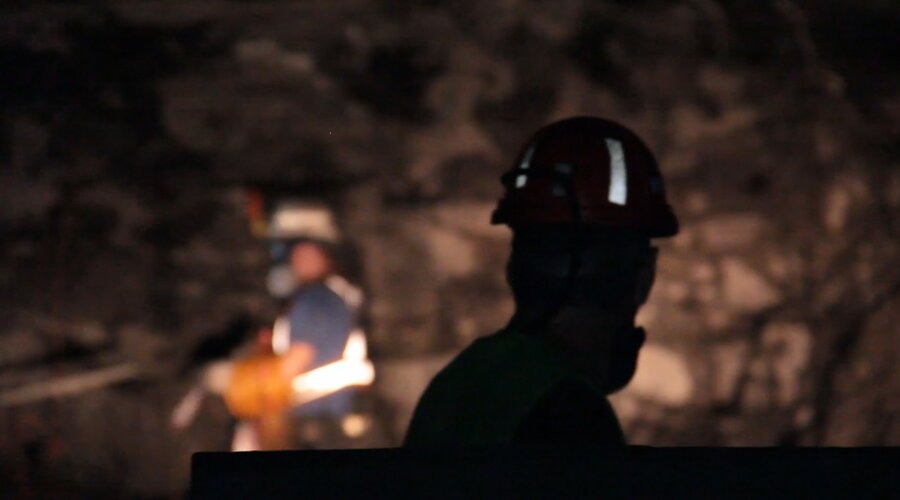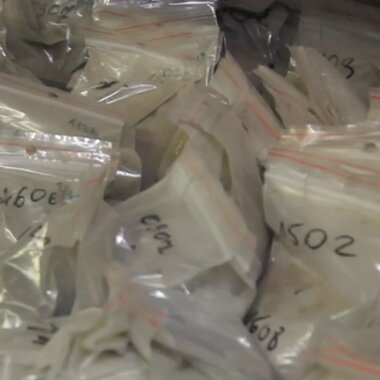200,000 geological tests at KGHM
Geological samples are taken at all KGHM’s drilled mine workings. In total, 40 tonnes of rock are taken for analysis by geologists studying copper ore deposits in one year. Testing and geological analysis makes it possible to identify directions and locations where the excavated ore may have a high content of the raw materials produced by the company.
Examination and testing of samples
Geological testing is a very complex process. Geologists working at KGHM take a series of small samples weighing approx. 200 grams, arranged linearly from the roof to the floor (i.e. the lower surface of the rock layers) in drilled mine workings. The rock fragments, separated from the space undisturbed by the mining operations, are marked with a specific code, bagged and sent to laboratories. There, the chemical composition of each sample is analysed and all major metals are accurately determined. Copper is determined in all samples, silver in more than half of them, and other components (e.g. molybdenum, nickel and iron) in nearly a thousand carefully selected samples.
In cases where the thickness of the deposit is greater than the height of the mine workings, geologists drill vertical boreholes in the roof or floor. This allows geologists to determine the vertical limits of even the thickest deposits.
So-called attestations, i.e. information on the intervals of the profiles tested, the thickness of the individual layers and a description of the rocks, are also prepared underground.
Education and technology at work
Lithology, the science of rocks, is fundamental to the work of geologists underground. With their knowledge of rocks and their characteristics, it is easier for them to identify where ores of high mineral content can be expected. In the case of the KGHM deposit studies, geologists describe several lithological varieties of sandstone, copper-bearing shale and carbonate rocks.
A similar sampling process is followed in rock salt deposits. In salt samples, the salt content is mainly determined as NaCl and insoluble substances are tested.
KGHM's geologists use dedicated computer applications in their work and keep electronic records.
Each year, KGHM takes approx. 200,000 samples, each weighing approximately 200 grams. This means that 40 tonnes of rock per year are taken by geologists to analyse and check the composition.








